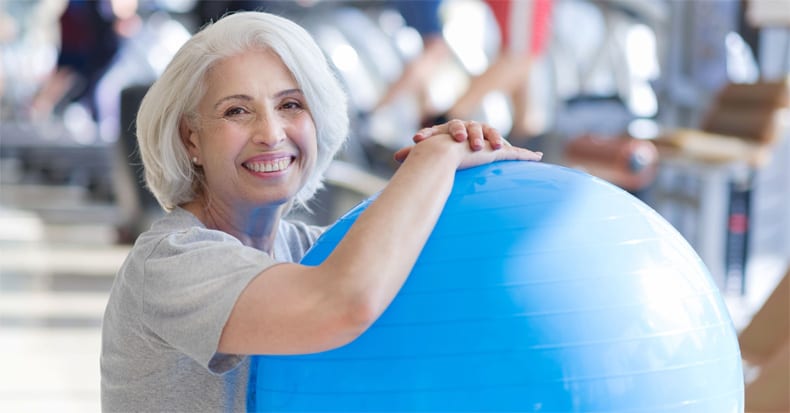In previous articles, we’ve explored how to individualize an exercise program for those with back pain. This month, we’ll look at why utilizing a Swiss ball may be more helpful for the back pain patient than simply doing floor-based exercises.
In a 2015 study published in the Journal of Sports Science and Medicine, researchers assigned twelve chronic (more than three months) low back pain (cLBP) patients to perform either floor- or ball-based exercises three times a week for eight weeks using four different motions or exercises.
Though subjects in both groups experienced improvements, the gains were much greater for those in the Swiss/gym ball group regarding functional improvement. CT scans of the participants in the ball group also revealed an increase in the cross-sectional area of the deep low back stabilizing multifidus (MF) muscles.
So why did the swiss ball patients fare better? A strong possibility is that the use of unstable devices such as a gym or Swiss ball forces the neuromuscular system to work harder to maintain balance. This process not only improves propropception— the body's ability to sense where its various parts are in relation to one another for purposes of movement and balance—but it also works out additional muscle groups that are involved in normal everyday movement that may not be activated when exercising from the floor or another stable surface.
The four Swiss ball exercises included in the study:
1) Bridge-1: Lay supine (on your back) with the ball under your upper back and bring one knee toward the chest to a 90/90° hip/knee angle; hold ten seconds and repeat five times with each leg.
2) Bridge-2: Lay supine with your upper back on the floor with the ball under the pelvis; push down into the ball with the pelvis for ten seconds and repeat five times.
3) Bird-dog (kneel on all-fours—quadruped position): Place a small ball (4-6”) under one knee (kneel on it) and slowly lift and straighten the opposite leg and balance for ten seconds and repeat ten times with each leg.
4) “See-Saw:” Lay on your stomach with the ball under the pelvis/hips, balance on the forearms, raise the legs, and do a scissors-kick (as if swimming) for ten seconds ten times with each leg.
We encourage proper form and working safely within “reasonable pain boundaries” that YOU define. Gradually increase reps and sets as you improve, modify the methods, and most important, HAVE FUN!


